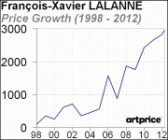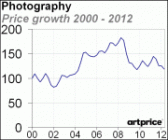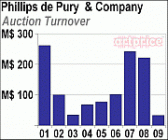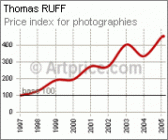What the Art Market has to say about Candida HÖFER (1944)
ArtMarket® Insight contents
Tribute to the Bechers [20 Oct 2015]
The Bechers, as we now call them, were a couple of photographers who immortalized industrial architecture in pictures that treated each edifice as if it were an “anonymous sculpture”.
Art Basel lands in Hong Kong. [30 May 2013]
The first edition of Art Basel Hong Kong proved to be a great success with public and dealers alike, attracting 60,000 visitors.
Double wammy for the Gunter Sachs collection at Sotheby’s [29 May 2012]
After the record Contemporary Art & Postwar art sales on 8 and 9 May, the art market’s dynamism has been confirmed by Sotheby’s sale of part of the Gunter Sachs collection.
Photographs [17 Apr 2012]
Sotheby’s photography sale on 6 April last year (2011) was particularly successful, generating a sales revenue of $4.5 million (excluding fees) and 82% of the works sold.
From Phillips to Phillips de Pury & Co. [21 Sep 2009]
Phillips de Pury & Co.’s inclination towards contemporary art, photography and design perfectly demonstrates the mutations of the art market during the last decade.The auction house experienced the exhilaration of the surge in prices and the violent contraction of the market… no matter what, Phillips de Pury & Co will stick with ultra contemporary art.
GERMAN PHOTOGRAPHY – From reality to fiction [10 May 2006]
Bernd and Hilla Becher are the leading lights of “objective” photography in Germany. Their approach refutes the anecdotal and focuses on inventorying anonymous “industrial sculptures” that appear throughout our environment. The radicalism of their documentary work had a strong impact on their students including Andreas Gursky, Thomas Ruff, Thomas STRUTH and Candida HÖFER. This later generation of photographers assimilated much of the Becher’s approach, although sometimes freeing itself from the “objective” view of reality by altering their images. From an auction and museum preference point of view, the later generation seems to have become more popular than the objective purism of the Becher period.



















 0
0
